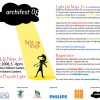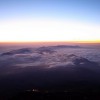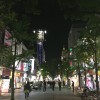The Diversity of Condominium Lighting in the Tokyo Area
Condominiums play a leading role in housing for the Tokyo Area. As the city grew, busy shopping, business, and entertainment districts are supported by the residences, which live in densely populated residential areas. As the population density increased so did the proportion of condominiums for housing. According to reality statistics, condominiums account for 70% of the housing within the 23 wards of Tokyo. For this survey we stepped away from the bustle of the big city and investigated 3 relatively large, densely populated condominium complexes. The three areas all have a different history and commuting distances from the center of Tokyo. What can we discover about the lighting environment of these three totally different condominiums and the surrounding residential area?
Toyosu
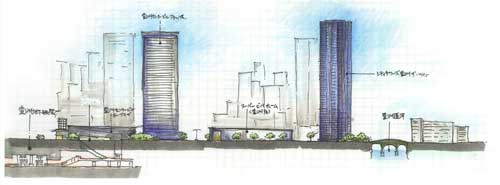
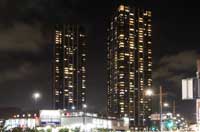
Once an industrial area built on reclaimed land, housing redevelopment started in 2003 and the first of several residential blocks was completed in 2006. Toyosu is a “new city”, built from scratch and popular with younger families and couples. The number of condominiums is astounding, but the development is not just large, but a luxurious residential area as well.
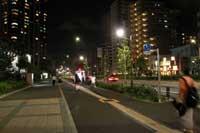
Color temperature viewed from the condominium windows:
Orange: 80%
White: 16%
Bluish: 4%
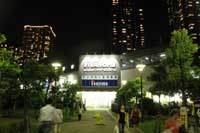
The tower condominiums are immediately visible upon leaving the station. Relatively close to the center of Tokyo, these tower condominiums were built during a boom in condominium real estate. Each tower has a luxurious entrance lobby and the tower crowns incorporate unique lighting designs. However, there is not much unity in the neighborhood, as a whole. Each condominium is very comfortable living, I`m sure, but the surrounding area still needs work. A home building center nearby is overly lit with1344lx at 5300K color temperature. The store is open late, but this blast of light in the middle of the night can`t be good for our internal biological clock.
Futako Tamagawa

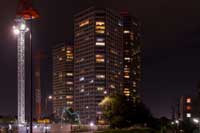
The condominiums in this area are relatively low-rise buildings surrounded by lots of greenery. East of the station is a large redevelopment project with several condominiums buildings, three of these being tower condominiums, all completed in 2010. The project is sandwiched between several department stores and office buildings near the station and a large park on the other side.
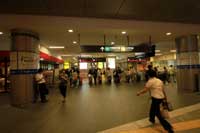
Color temperature viewed from the condominium windows:
Orange: 86%
White: 11%
Bluish: 2%
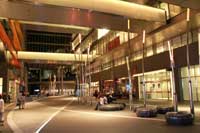
The surrounding Tamagawa River was once a victim of the scrap and build era, but has since been revived with lush greenery and transformed into a popular residential area. Each building is not a distinctive design, but the overall area and environment seems to be well thought out during the design process. Orange-ish light is mostly seen spilling from residential windows helping to create a pleasant atmosphere in the neighborhood. It’s no wonder that several dogs and their owners are out for nightly strolls. Near the station the lighting environment is comfortable at 200lx and 3000K.
Takajima Daira


Once a farming area, Takajima Daira condominiums were built by the Japanese Housing Authority, now the Urban Renaissance Agency, in 1972. Most of the 14 buildings resemble mass produced housing of the era and are neatly lined up in rows. The housing population peaked in 1992, from then on families with children decreased and the elderly population increased.
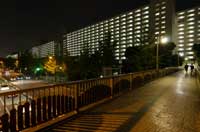
Color temperature viewed from the condominium windows:
Orange: 14%
White: 24%
Bluish: 62%
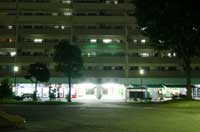
The neat rows of buildings are over-flowing with that lived-in feeling. Balconies are full of drying laundry, futons, and bedding and one can almost hear the clinking of dishes around the dinner table. The supermarket on the grounds has replaced some fluorescent lighting with LEDs, but is a bustling marketplace. The lighting environment is unique and vigorous and nobody seems to care about small lighting details. It is an active place with people coming and going and various activities. Deep down the residences seem to be really linked to this place. This is the type of housing streetscape and culture that needs to be preserved.





